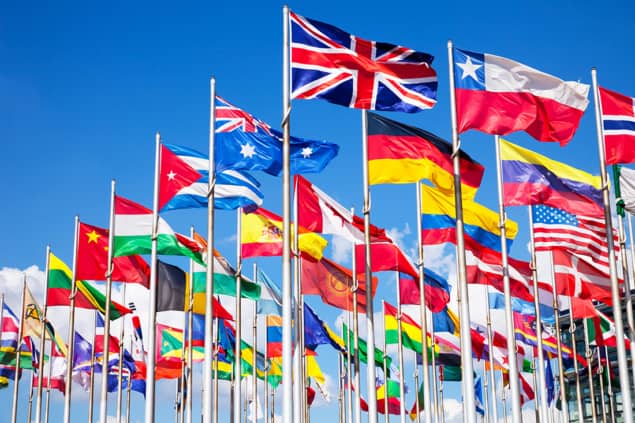
For people whose travel plans got shredded by this morning’s snowfall across the north-eastern US, it won’t be a surprise to hear that the world’s aviation network is vulnerable to disruption. Some travellers might, however, raise a weary eyebrow at the news that losing highly-trafficked nodes in that network – Logan Airport in Boston, say – is less damaging to the network’s integrity than losing less-busy “feeder” nodes.
This counterintuitive result formed part of a talk by Nuno Araujo on the opening day of the American Physical Society’s March Meeting, which is taking place this week in the snowbound city of Boston. Araujo and his colleagues at Lisbon University, Portugal, have been studying the world aviation network, or WAN, for several years. Their model is based on data from openflights.org, and it takes in such information as the locations of the world’s 3237 airports (nodes) and the structure of the 18125 connections between them (links).
On average, each airport in this network is connected to 19.21 others, while the average number of connecting flights required to get from point A to point B is 4.05. The maximum number of connections, meanwhile, is 12 – and if a 12-connection journey doesn’t sound like your idea of a relaxing holiday, you aren’t alone. The Lisbon group’s latest research combines the WAN information with data on where travellers actually go, and one of their findings is that people who fly for leisure – tourists – strongly prefer destinations that are either nearby (defined as less than 1000km distant), or connected by a single, direct flight.
Speaking as someone who once flew from north-east England to my hometown of Kansas City via London, Reykjavik, New York and Atlanta, I can’t say I’m shocked by this result. The group’s other findings, however, include some head-scratchers. It’s become a commonplace to say that we live in a highly interconnected world. Indeed, the fact that it is theoretically possible to fly from the tiniest, most remote airport in country A, to an equally off-the-beaten-track destination in country B, in no more than 12 “hops”, is in some ways proof of this connectedness. In practice, however, the Lisbon researchers found that only 15% of the world’s countries experience bi-directional flows of tourists. Instead, the dominant pattern is of imbalance: some countries send out lots of tourists but receive few, and many others experience mass influxes of visitors while their own citizens stay at home (presumably, in some cases, to work in the tourism industry).
The group’s map of the world’s tourism “communities” also turns up a few surprises. In tourism terms, Madagascar is part of Europe’s community, not Africa’s. Colombia and Venezuela share more tourists with North and Central America than they do with fellow South American countries such as Argentina and Brazil. And for some reason, the west African nation of Mauritania belongs to a tourism community that includes China, south Asia, Australia and Oceania, but not any of its neighbours, which are instead part of communities centred in sub-Saharan Africa and North America.
Araujo’s latest research is full of such fascinating facts, and it also has a serious purpose. At the end of their paper, the authors state that it is “imperative to further explore how wealth is transferred through tourism” in order to optimize the WAN to meet the demands of this $1340bn-a-year industry. In a highly connected world, it’s not just the major nodes that matter.



